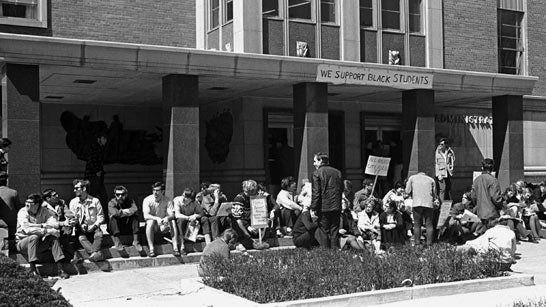The late 1960s was a high tide of activism across the world. It was a period where black people and black communities were coming together with growing cultural awareness and political commitment. In January 1970, representatives from different black student caucuses at the University of Michigan – such as the black student union, the black law students association, the association of black social work students, and black students groups from the medical school and psychology department – came together to form a coalition called Black Action Movement (BAM). Responding to the collective cultural and political environment of the United States as at the time, BAM’s goal was to combat discrimination on campus and eliminate racial bias. By that March, BAM had organized a student protest based on twelve demands including: nine hundred new Black students by Fall 1971, consisting of 450 freshman, 150 transfers, and 300 graduate students; ten percent Black enrollment by Fall 1973; an adequate supportive services program, including financial aid to finance Black students’ education, graduate and undergraduate recruiters to recruit Black students; a referendum on the March Student Government Council ballot to have students vote on assessing themselves $3.00 for one year for the Martin Luther King Scholarship Fund; tuition waivers for minority group students who are also residents of the state of Michigan; the establishment of a community-located Black Student Center; the creation of a University-wide appeal board to rule on the adequacy of financial aid grants to students; a revamping of the Parent’s Confidential Statement; one recruiter for Chicano students to assure fifty Chicano students by Fall 1970; Black students referred to as Black, not Negro or anything else. BAM’s eighth demand was that the university ‘halt all work of a permanent nature on the Black studies until an effective input is fully developed by a Community-University forum’. For BAM, it was crucial that the Black students and faculty play a leading role in formulating the mission and goals for the university’s Black Studies program.



